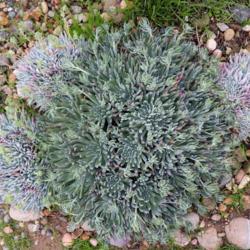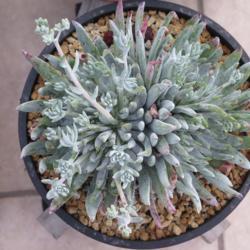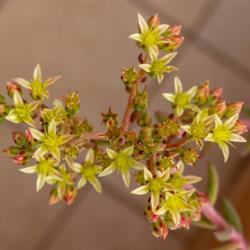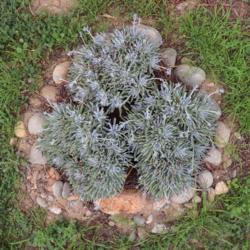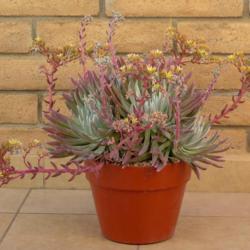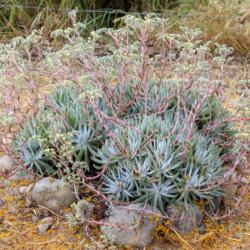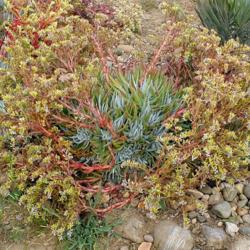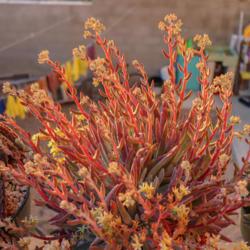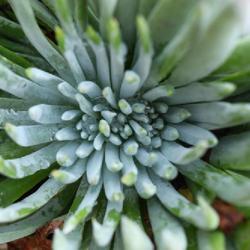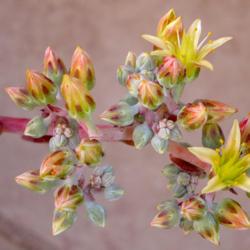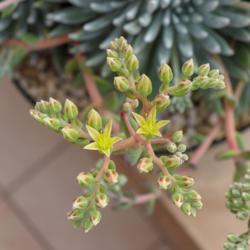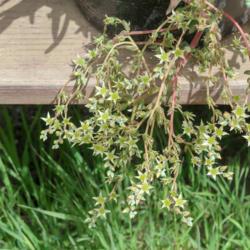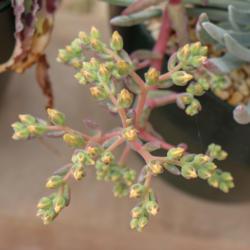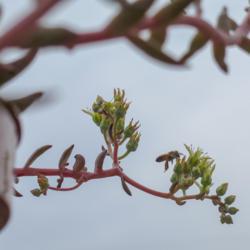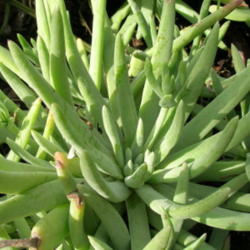General Plant Information (Edit)
| Plant Habit: |
Cactus/Succulent
|
| Life cycle: |
Perennial
|
| Sun Requirements: |
Full Sun to Partial Shade
|
| Leaves: |
Evergreen
|
| Fruit: |
Dehiscent
|
| Flowers: |
Showy
|
| Flower Color: |
Pink
White
|
| Bloom Size: |
Under 1"
|
| Flower Time: |
Spring
Late spring or early summer
Winter
|
| Suitable Locations: |
Beach Front
Xeriscapic
|
| Uses: |
Will Naturalize
|
| Wildlife Attractant: |
Hummingbirds
|
| Resistances: |
Drought tolerant
|
| Containers: |
Suitable in 3 gallon or larger
Needs excellent drainage in pots
|
- Bright Green Dudleya
- Green Live-forever
- Big Green Dudleya
Posted by
Baja_Costero (Baja California - Zone 11b) on May 10, 2019 8:05 PM concerning plant:
Green (powder-free) or whitish (powder-dusted) coastal and island Dudleya with open (spreading), white flowers and flattened, non-viscid leaves. Rosettes tend to branch extensively. Native of the southern Channel Islands, a bit of coastline south of Los Angeles, and Guadelupe Island off Baja California. The various subspecies (formerly species of their own) have distinct origins. This species has absorbed the former D. hassei (Santa Catalina & Guadelupe Islands) and D. insularis (Santa Catalina and San Nicholas Islands, plus the mainland from Point Vicente to Point Fermin). Subspecies virens is restricted to San Clemente Island. Attracts hummingbirds.
The former species D. hassei was released as ISI 1845 in 1988. D. virens was released as ISI 1846 (1988) and as ISI 89-47 in 1989.
| Thread Title |
Last Reply |
Replies |
| Gorgeous by tabbycat |
Feb 27, 2019 9:54 PM |
2 |
« Add a new plant to the database
» Search the Dudleyas Database: by characteristics or by cultivar name
« See the general plant entry for Dudleyas (Dudleya)
« The Dudleyas Database Front Page
« The Plants Database Front Page


